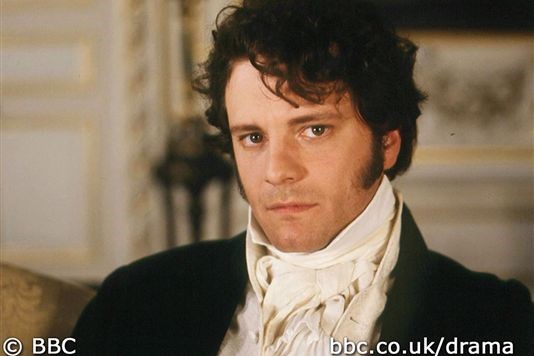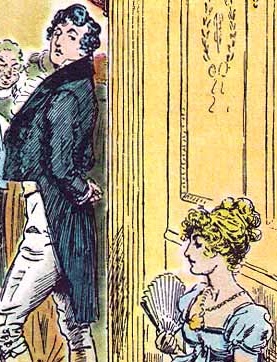Pride and Prejudice... and food

Charlotte Morgan's love of food is second only to her love for Pride and Prejudice. Seamlessly marrying these two passions together, she looks at how food features in the famous book, which is 200 years old this week.
 “Vulgar in tone” and “without genius, wit or knowledge of the world” is how American essayist Ralph Waldo Emerson described Pride and Prejudice, the second of Jane Austen’s six novels, when it was first published in 1813.
“Vulgar in tone” and “without genius, wit or knowledge of the world” is how American essayist Ralph Waldo Emerson described Pride and Prejudice, the second of Jane Austen’s six novels, when it was first published in 1813.
Well, I’m afraid the joke’s on you Ralph… because since making those damning remarks, P&P has sold over 20 million copies worldwide and has been adapted for TV, radio and film in every way possible (I’ve counted 43 re-makes to date). You can even tour the locations where the 1995 BBC series was filmed, dressed in regency costume like I did (pictured here). Ahem.
Anywho, have you ever considered how important a part food plays in Pride and Prejudice? Here’s three things I’ve noticed, when reading the book and watching the classic BBC adaptation…
At the Netherfield Ball
 This is a turning point in the novel, where Elizabeth Bennet and Mr Darcy dance for the very first time. “As soon as Nicholls has made white soup enough I shall send round my cards,” says Mr Bingley, host of the ball and Jane Bennet’s love interest. ‘White soup’ was made of veal stock, cream and almonds, and would most likely have been followed by cold meats, poached salmon, glazed carrots, dry cakes, cheese, pies and trifles, all of which probably weren't eaten until midnight (an earlier dinner might have been had between 3 and 5pm).
This is a turning point in the novel, where Elizabeth Bennet and Mr Darcy dance for the very first time. “As soon as Nicholls has made white soup enough I shall send round my cards,” says Mr Bingley, host of the ball and Jane Bennet’s love interest. ‘White soup’ was made of veal stock, cream and almonds, and would most likely have been followed by cold meats, poached salmon, glazed carrots, dry cakes, cheese, pies and trifles, all of which probably weren't eaten until midnight (an earlier dinner might have been had between 3 and 5pm).
Even ice cream was served at elegant Georgian balls to impress, and testicles were also delicacies; perhaps Darcy had a couple before plucking up the courage to dance? And to think, if Nicholls hadn’t made white soup enough, the ball would never have happened!
 At such midnight feasts as these, dinner could have consisted of anything up to 16 dishes, and would last for several hours. Hence why the Bennet family don't leave Netherfield until the wee small hours: "...even Lydia was too much fatigued to utter more than the occasional exclamation of 'Lord, how tired I am!'".
At such midnight feasts as these, dinner could have consisted of anything up to 16 dishes, and would last for several hours. Hence why the Bennet family don't leave Netherfield until the wee small hours: "...even Lydia was too much fatigued to utter more than the occasional exclamation of 'Lord, how tired I am!'".
As for the booze, which the Bennet family make swift work of in the BBC adaptation, that would have been regency cups full of punch, white and red wine, 'negus' (wine mixed with hot water, lemon and nougat), 'orgeat' (a sweet orange and almond syrup), or 'ratafia' (coridal falvoured with fruit or almonds). Port was for the gentlemen only.
Mr Bennet’s fool
 In the 1995 BBC adaptation of Pride and Prejudice, many of the scenes are shot at the Bennet dining table (the news that simpering clergyman Mr Collins is to visit was delivered by Mr Bennet over breakfast, for example). Screenwriter Andrew Davies wanted it to be as realistic as possible, and so most of the scenes feature eating. Each actor could choose his/her favourite food to make re-takes more enjoyable, but Benjamin Whitrow (who played Mr Bennet, pictured here) soon grew tired of his pudding.
In the 1995 BBC adaptation of Pride and Prejudice, many of the scenes are shot at the Bennet dining table (the news that simpering clergyman Mr Collins is to visit was delivered by Mr Bennet over breakfast, for example). Screenwriter Andrew Davies wanted it to be as realistic as possible, and so most of the scenes feature eating. Each actor could choose his/her favourite food to make re-takes more enjoyable, but Benjamin Whitrow (who played Mr Bennet, pictured here) soon grew tired of his pudding.
"The standby props man asked me what I liked to eat," he recalled. "I told him gooseberry fool was my favourite pudding and he kindly provided it for me. It was so delicious that during the first two takes of the scene I gorged myself. At the other end of the table Alison Steadman [Mrs Bennet] cannily toyed with a couple of grapes. It took two days to shoot this and I shall never be able to eat gooseberry fool again!" [Taken from the Jane Austen Centre]
The feeble Anne De Bourgh
Lady Catherine De Bourgh (Mr Darcy’s aunt, and Elizabeth Bennet’s nemesis) has a daughter, Anne De Bourgh, who has always been intended for Mr Darcy. She is introduced as looking “sickly and cross,” evidently because she eats so little. During a dinner at Lady Catherine’s grand estate, Miss De Bourgh’s companion Mrs Jenkinson was "chiefly employed in watching how little Miss De Bourgh ate, pressing her to try some dish, and fearing she was indisposed." The men, on the other hand, "did nothing but eat and admire".
 To be buxom and bordering on plump was the fashion for ladies of breeding in Georgian times (indeed, Susannah Harker, who played Jane Bennet in the 1995 adaptation, was heavily pregnant during filming), and Lydia Bennet (played by Julia Sawalha, pictured here), who is quite the most flirtatious character, is always eating too much. “Lord! Denny, fetch me a glass of wine,” she says at the Netherfield Ball, “I can scarce draw breath, I’m so fat!”
To be buxom and bordering on plump was the fashion for ladies of breeding in Georgian times (indeed, Susannah Harker, who played Jane Bennet in the 1995 adaptation, was heavily pregnant during filming), and Lydia Bennet (played by Julia Sawalha, pictured here), who is quite the most flirtatious character, is always eating too much. “Lord! Denny, fetch me a glass of wine,” she says at the Netherfield Ball, “I can scarce draw breath, I’m so fat!”
It’s no coincidence that skinny Anne de Bourgh is portrayed as being sickly and unattractive, whereas plump Lydia Bennet is “naturally lively” and “never without partners” at a ball.
Are you a P&P fan? Or do you know anything about Georgian dining? Talk to us in the Comments box below…
Lead image courtesy of the BBC.
You might also like
Comments
Do you want to comment on this article? You need to be signed in for this feature